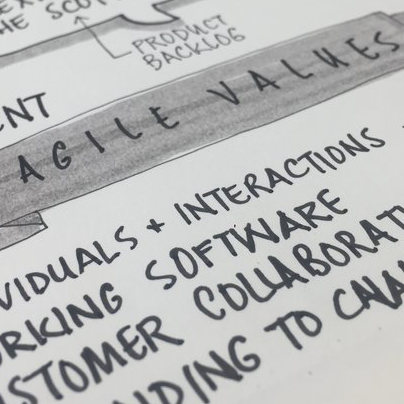“Getting the right content to the right user at the right time through strategic planning of content creation, delivery, and governance.”
Content is the word we often use to describe all the text on a webpage or in a publication. It’s more than that though, it’s actually everything we produce to share information – the words, the pictures, the videos, the scripts, the infographics, the numbers, the graphs, the recordings, the podcasts, the books, the pamphlets, the fliers, and on and on.
Strategy is a way to solve problems. It’s a directed course of action to achieve an intended and defined set of goals.
If we understand that the foundation of a strategy is:
- diagnosis - defining the problem, objectives, and desired outcomes
- guiding policy - formulating of the parameters, determining the environment, developing the solutions based on the diagnosis
- action plan - implementing the goals set by the guiding policy
We can use that foundation to underpin our creation and curation of content. It’s a way to create a plan to manage content which in turn influences tactics, tools, governance, guidance, actions, wrangling, measuring all that “content” we use to communicate our messages.
- The plan is the way we're going to do it. The mid to top level look at how we're going to navigate the landscape of the message, the means, the manner in which we're going to disseminate the knowledge to the audience.
- The tactics are more about the details. The lower levels; the granular; exactly how we're going to do this. It’s about the steps and the details of the steps that are needed to fill the void around our strategy structure. It's dirty down there, and it's unpredictable, and it's full of humans and technology and things that break and don't work and there needs to be flexibility and "thinking on one's feet" and "pushing on” and “through" and getting up early and staying up late and workarounds and innovations and all the kinds of things we do to get this work done. This is where the rubber meets the road.
- The tools are what we make and acquire and invent to do the work more efficiently. These tools keep track of things, help us to collaborate and converse with our team mates and our managers. They measure how we're going and where we've been and what’s left to do. The content inventories and the columns of analytics, the style guides and the content freezes, the page tables and the audience personas. These are the spanners and wrenches of our work.
- The governance is about how we look after our content and our processes over time. How we remember the past and look to the future. How we make our big decisions and how we spend our budgets. It's about resourcing our best efforts and making every penny count.
- The guidance is about brining everyone along with us. It's about style guides and writing styles, it's about functional specifications and server requirements. It's about best practice (in the proper sense of the word) and exploring the latest thinking. It’s informed and it has a level head. It keeps the horizon in the cross-hairs and our nose up.
- The action is just that. Sleeves up and heads down - doing the work. Writing the copy. Defining the audience. Knowing the objectives. Editing ruthlessly. Utilising the best channels for the content. It's about typing on the keyboard, speaking into the microphone, rendering the video, uploading the transcripts. It is the output of our tactics.
- The wrangling is the people. It's talking to people who don't know a damn thing about what we do; it's about talking to people who don't give a flying fig about the audience and adore their own content. It's about getting them on-side and contactable so they can authorise content updates, approve its use over multiple channels, who determine the accuracy. It's also organsing those who don't nerd out the way we do; who have to do this job as one of many of the jobs they need to do every day.
- The measuring is no good if you don't know where you've been or where you are now or where you're going. You need to sort out what you want to measure - what’s important; what’s valuable. We need bang of insight to that buck of analysis. Those numbers need to tell their own story and influence the plot of ours. What we measure needs to circle back on our strategy and change it accordingly. It is the pillar in that proof. It's the compass on this journey.
So it appears that the field of "Content Strategy" covers plenty of ground to keep a person occupied. It's a rich and varied field for anyone who appreciates language, organising information, project management and who rises to the challenges of getting the right information to the right people at the right time.
“Content strategists should strive to achieve content that is readable and understandable, findable, actionable and shareable in all of its various forms.”


